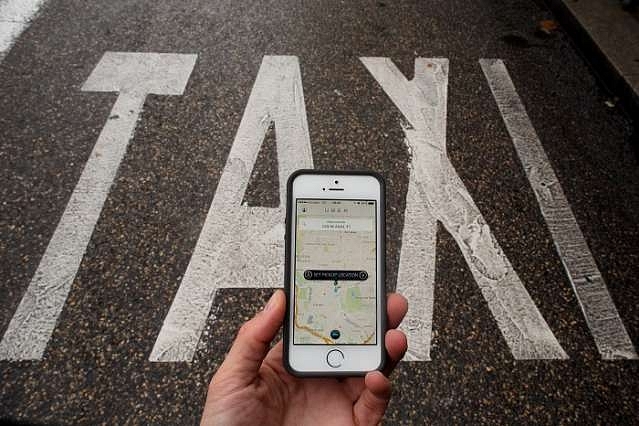
Last-Mile Connectivity: Public-Private Transport Partnerships To See The Passenger Through
While taxi aggregators have offered the last mile transportation solution, the government must work harder to make public transport a more attractive option.
Delhi, as India’s capital, is full of contradictions. On the one hand, it takes pride in its ever-expanding metro and bus network; on the other, a large number of people continue to use private vehicles for daily commutes. There have been other challenges as well – like smog, for instance. The air quality has been declining consistently since the onset of winter and has led to a public health emergency. While the government is trying to impose the “odd-even” scheme on commuters, this, at best, is a short-term emergency measure. What we need in the long run is to pull people towards the use of public transport.
While one of the objectives of public transport is to offer a quality alternative, another is to persuade commuters to make the switch from personalised modes (private cars, two-wheelers) of travel to public transport. It is perhaps at this second aspect that our urban planners and city governments have failed. We need to realise that public transport systems are limited by their lower accessibility (in terms of direct access from trip ends); on the other hand, private modes offer a variety of advantages such as demand mobility, comfort, status, speed, and convenience. Thus, for people to make the switch, there need to be clear advantages with public transport. The prime advantage that private modes offer is direct access between trip ends, and this is where perhaps the focus is drawn to “last-mile connectivity”.
As the name suggests, last-mile connectivity implies connecting services up to the end point. The phrase was originally used in the telecommunications industries to describe the technologies and processes used to connect the end customer to a communications network. Although the term says “mile”, the actual distance of this leg may be considerably more than a mile, especially in rural areas. In the context of urban transport, the term finds relevance in public mass transit systems where it is referred to as both the initial and final leg of delivering connectivity – from origin to transit system and from transit system to destination.
Last-mile connecting services enable commuters to easily connect or transfer to the main bus or rail network. They are important because they complement rapid transit services by offering commuters the complete trip they need. A number of factors, from affordability, ease of access and quality of the mode and road, impact and control the last-mile connection that a consumer would take.
Take the case of the metro, for instance, which has become the favourite public mass transit option in Delhi - the problem of last-mile connectivity remains. Many of the capital’s residents opt to use auto-rickshaws for their last-mile commute. However, in some cases, auto-rickshaws are so expensive that they cost more than 50 per cent of the total commute cost. Cheaper options such as the metro feeder buses are extremely crowded, in dilapidated condition, and often unreliable. As a result, those who cannot afford auto-rickshaws have to walk to get from home to work and back.
Once again, given the condition of Delhi’s roads, it’s almost impossible for a pedestrian to cover distances over a walk. Most of the roads lack sidewalks, foot-over bridges, adequate street lighting, and so on. The World Bank had recently reported, “The urban poor make up a city’s ‘captive walkers’ but since this group has the least resources, it usually has the smallest political voice.” It is critical to create a safe and equitable city where people are able to access high-quality, affordable transport.
A recent survey by New Delhi University’s Department of Urban Planning shows that there is still a long way to go, with 65 per cent of current metro users bringing up the problem of finding transport, and 40 per cent of private mode users pointing towards last-mile connectivity issues as a large reason for their decision to not use public transport. Yet, at the same time, more than 50 per cent of private mode users said that they would be willing to use public transport if given appropriate services to connect to transport lines. It is thus up to our policy makers and government to make full use of this opportunity.
As usual, the private sector has jumped in to grab the opportunity. Both Ola and Uber are looking at business opportunities that can be created in this situation. While the aggregator might be facing issues with the state government, Uber has partnered with Namma Metro to provide booking kiosks at select Bengaluru metro rail stations. Similarly, Ola too has partnered with Gurgaon Rapid Metro to provide an easy booking option for commuters. Another trend has been to get a dedicated zone for the taxi aggregators at airports (and increasingly at metro stations), which again eases the parking problem and reduces the time taken.
According to Uber Bengaluru general manager Christian Freese, “For Uber, it’s all about being a part of the fabric of the city. This partnership is a great example of how the public and private transport can work together and complement each other’s strengths to help solve major issues that citizens face, in this case, last mile connectivity. We look forward to working with BMRCL and giving metro commuters a reliable, efficient and affordable last mile transportation option, at the push of a button.”
Such a partnership indeed represents a very healthy relationship between the public and private sectors to provide a reliable service. While taxi aggregators can definitely play an important role in providing last-mile infrastructure for commuters, the state too needs to put continuous efforts to make public transport a more attractive option. Apart from ensuring safe and affordable transport, the governments perhaps should also look into making the roads pedestrian- and cyclist-friendly, as this can be the cheapest - and perhaps healthiest - option for last-mile connectivity.